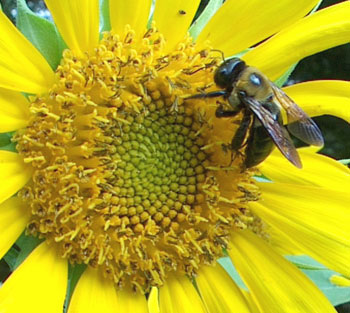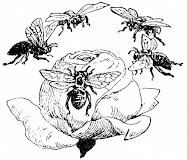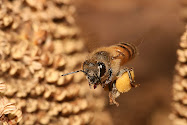 City Bees on the Farm
City Bees on the FarmA couple of years ago I found myself with an empty nest and a future full of postponed possibilities. My farmer wanna-bee genes were kicking in. I took an organic gardening class through Phipps Conservatory that happened to be taught by Barb Kline from Mildreds’ Daughters Urban Farm. On the last day of class, we students visited her farm – 5 agricultural acres in the middle of a Stanton Heights neighborhood of circa 1950 brick homes. We all checked out the fields, the crops, the bugs, and the soil. We heard the plans for a hoop house and next year’s crop rotation. Then Barb asked, “Who’d like to do a volunteer for the CSA next year?” “Ooo Ooo – me, me, me!!” I raised my hand and jumped up and down like a school kid. And that was that. By the next year, I was planting seedlings in the spring, harvesting in the fall and doing everything else there is to do in between. I was farming!
At the same time, I was enrolled in the first class of wanna-beekeepers through Burgh Bees. The more I learned, the deeper I wanted to get into it. The only thing to do was to keep some hives of my own. So, after a season of consideration, Barb and her partner Randa graciously agreed to let me bring hives to the farm. In April, Robert Steffes -- with the help of Steve Repasky -- delivered my first hive to the farm. It was a proud moment when Robert handed over the hive tool to me. I’ve been at it, happily, ever since. And so have the bees. At least I think they may have something to do with the blueberry bushes being so laden with fruit this year!


Since the bees have arrived at the farm, we’ve all been considerate about their plant preferences. We planted some borage outside of the hoop house to coax them inside to work on the tomatoes there. We planted hundreds of sunflowers along with rudbeckia, aster, sage, anise hyssop and more. The wooded hillside below the hive site is, of course, loaded with Japanese Knotweed and many native pollinator favorites.


As of last month, the bees have new neighbors: ten young chickens raised from peeps share the same fenced yard. I watched as one of them snatched a firefly in mid-air the first day she was out and wondered whether she’d try that with a bee. I figure the chicks and bees will work it out. And why not? They have the best of both worlds: a lush working farm in the middle of the fun and interesting city of Pittsburgh.
I’m thankful to share that space with them – at least for a few days out of the week.




Joan, thanks for writing about your experience with Mildred's Daughters. Your story of the how the farm's interest in plants & crops led to an appreciation of bees is a great counterpoint to our efforts to develop gardens in support of the bees at the apiary.
ReplyDeleteMany paths lead to the fascinating relationship between plants and pollinators!